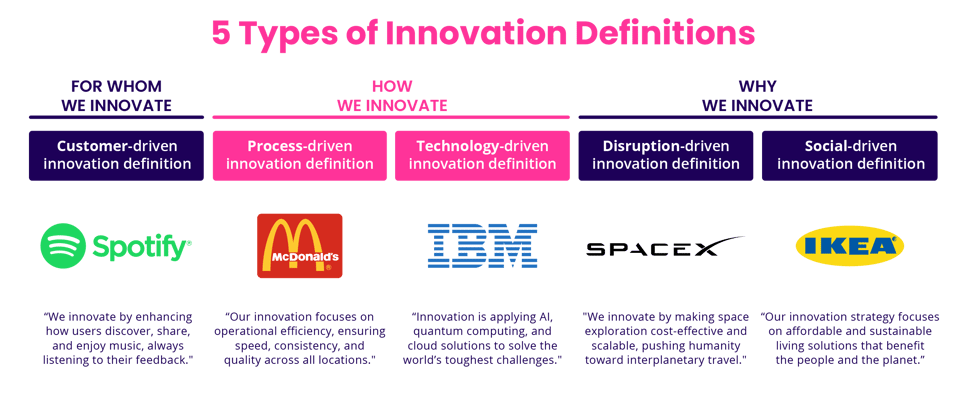Emergent Innovation
(2025-08-12T03:33.139Z)
Perplexity Query
(2025-08-12T03:33
.139Z)
Question:
Write a comprehensive one-page article about "Emergent Innovation".
Response from sonar-pro:
Emergent Innovation
Introduction
Emergent innovation is the process by which novel solutions, products, or practices arise organically from interactions among people, technologies, and environments—often without top-down planning. It matters because complex markets shift faster than any central plan can track; organizations that harness bottom‑up signals and experimentation adapt more quickly, reduce risk, and discover value others miss.

Main Content
Emergent innovation differs from traditional, linear R&D in that it emphasizes decentralized discovery, rapid feedback loops, and the recombination of existing capabilities into new forms. Instead of a single roadmap, teams probe opportunities, sense what works, and scale what gains traction. This approach draws from complex adaptive systems: when diverse agents interact under simple enabling constraints—shared goals, open interfaces, and fast learning cycles—unexpected but useful patterns can surface.
Practical examples abound. In software, open-source ecosystems like Linux and Kubernetes illustrate how modular architectures and community governance allow features to emerge from real-world needs, then harden into standards. In retail, small experiments—such as curbside pickup piloted at a few stores—scaled rapidly during crisis conditions, becoming enduring services after customers validated their convenience. In manufacturing, frontline suggestions and digital twins can combine to improve yield: operators spot anomalies, data teams prototype fixes, and validated tweaks roll out plant-wide. In services, hospitals that enabled cross-functional huddles and lightweight process changes uncovered faster triage pathways and reduced wait times.
The benefits are tangible. Organizations gain speed-to-learning, because many parallel bets generate richer evidence than one big bet. They reduce downside risk via small, reversible experiments while increasing upside through optionality. They also build resilience as successful patterns—new business models, processes, or partnerships—diffuse across the enterprise. Applications span product development (feature flags and A/B tests), operations (kaizen-style continuous improvement), business model innovation (pilot subscriptions or outcome-based pricing), and ecosystem plays (APIs that let partners co-create value). According to research on business model dynamics, frequent and successful business model innovation can be a competitive advantage and improve resilience to environmental change, while poorly managed radical shifts can strain person-organization fit and increase turnover
[2bd4bb]
.
There are challenges. Emergent efforts can fragment without clear constraints or priorities; leaders must set guardrails, shared metrics, and ethical standards. Coordination costs rise as more experiments run in parallel; platform tooling, common data, and governance help. Cultural barriers—fear of failure, rigid hierarchies—can suppress grassroots ideas. Approaches aligned with emergent leadership, where influence arises from demonstrated problem-solving rather than title, can unlock participation and trust across teams
[2bl02v]
. Finally, scaling requires disciplined selection: celebrate learning, but only propagate changes with robust evidence.

Current State and Trends
Adoption is broadening as organizations face continuous disruption. Businesses increasingly use lightweight pilots, modular technology stacks, and venture-style portfolios to explore opportunities while protecting core operations. During crises, firms that leaned into experimentation improved agility, solved urgent problems under pressure, and often emerged more resilient and competitively advantaged—patterns documented across sectors from contactless commerce to telehealth
[gwi41t]
. At the strategic level, companies are institutionalizing business model innovation to continually create, deliver, and capture value—not just refine products—recognizing that adaptable models buffer shocks and open new markets
[2bd4bb]
.
Key players span technology platforms (cloud providers, open-source foundations), enterprises formalizing venture studios and product growth teams, and operations leaders embedding continuous improvement on the shop floor. Enabling technologies include feature management and A/B testing tools, low-code platforms, API-first architectures, digital twins, and AI copilots that shorten the cycle from signal to solution. In parallel, emergent leadership practices—where leaders arise through initiative and peer trust—support faster, bottom-up decision-making in large organizations
[2bl02v]
.
Future Outlook
Emergent innovation will accelerate as AI augments discovery, simulation compresses testing timelines, and interoperable platforms lower collaboration friction. Expect more organizations to run perpetual experiment portfolios tied to adaptive business models, with governance that balances speed, safety, and ethics. The impact will be a shift from periodic transformation to continuous reinvention—where value emerges at the edges and scales through shared infrastructure and evidence-based selection.

Conclusion
Emergent innovation channels decentralized creativity into scalable outcomes by combining small bets, rapid learning, and clear guardrails. As markets grow more complex, those who systematize emergence will find opportunity faster and build more resilient, adaptive enterprises
[gwi41t]
[2bd4bb]
[2bl02v]
.
Footnotes
[2bl02v] : 2025, Jul 08. What Is Emergent Leadership? (Plus Why It's Important). Published: 2025-07-24 | Updated: 2025-07-09
[gwi41t] : 2025, Aug 10. Leaning into Crisis Innovation. Published: 2025-08-05 | Updated: 2025-08-11
[2bd4bb] : 2025, Jul 30. Business model. Published: 2025-07-22 | Updated: 2025-07-31